coolant temperature DODGE JOURNEY 2014 1.G User Guide
[x] Cancel search | Manufacturer: DODGE, Model Year: 2014, Model line: JOURNEY, Model: DODGE JOURNEY 2014 1.GPages: 124, PDF Size: 3.37 MB
Page 77 of 124

Please note that the TPMS is not a substitute for proper tire maintenance, and it is the
driver’s responsibility to maintain correct tire pressure, even if under-inflation has not
reached the level to trigger illumination of the TPMS low EVIC display.
Your vehicle has also been equipped with a TPMS malfunction indicator to indicate when
the system is not operating properly. The TPMS malfunction indicator is combined with the
low tire pressure telltale. When the system detects a malfunction, the telltale will flash for
approximately one minute and then remain continuously illuminated. This sequence will
continue each time the vehicle is restarted as long as the malfunction exists.
When the malfunction indicator is illuminated, the system may not be able to detect or
signal low tire pressure as intended. TPMS malfunctions may occur for a variety of reasons,
including the installation of replacement or alternate tires or wheels on the vehicle that
prevent the TPMS from functioning properly. Always check the TPMS malfunction telltale
after replacing one or more tires or wheels on your vehicle, to ensure that the replacement
or alternate tires and wheels allow the TPMS to continue to function properly.
NOTE:
Tire pressures change by approximately 1 psi (7 kPa) per 12° F (7° C) of air temperature
change. Keep this in mind when checking tire pressure inside a garage, especially in the
Winter. Example: If garage temperature is 68°F (20°C) and the outside temperature is 32°F
(0°C), then the cold tire inflation pressure should be increased by 3 psi (21 kPa), which equals
1 psi (7 kPa) for every 12°F (7°C) for this outside temperature condition.
CAUTION!
The TPMS has been optimized for the original equipment tires and wheels. TPMS
pressures and warning have been established for the tire size equipped on your vehicle.
Undesirable system operation or sensor damage may result when using replacement
equipment that is not of the same size, type, and/or style. Aftermarket wheels can cause
sensor damage. Do not use tire sealant from a can, or balance beads if your vehicle is
equipped with a TPMS, as damage to the sensors may result.
- Engine Temperature Warning Light
This light warns of an overheated engine condition.
If the light turns on and a warning chime sounds while driving, safely pull over and stop the
vehicle. If the A/C system is on, turn it off. Also, shift the transmission into NEUTRAL and idle the
vehicle. If the temperature reading does not return to normal, turn the engine off immediately.
We recommend that you do not operate the vehicle or engine damage will occur. Have the
vehicle serviced immediately.
WARNING!
A hot engine cooling system is dangerous. You or others could be badly burned by steam
or boiling coolant.
WHAT TO DO IN EMERGENCIES
75
Page 81 of 124

IF YOUR ENGINE OVERHEATS
In any of the following situations, you can reduce the potential for overheating by taking the
appropriate action:
• On the highways — slow down.
• In city traffic — while stopped, shift the transmission to NEUTRAL, but do not increaseengine idle speed.
NOTE:
There are steps that you can take to slow down an impending overheat condition:
• If your air conditioner (A/C) is on, turn it off. The A/C system adds heat to the engine cooling system and turning the A/C off can help remove this heat.
• You can also turn the temperature control to maximum heat, the mode control to floor and the blower control to high. This allows the heater core to act as a supplement to the
radiator and aids in removing heat from the engine cooling system.
CAUTION!
Driving with a hot cooling system could damage your vehicle. If the temperature gauge
reads HOT (H), pull over and stop the vehicle. Idle the vehicle with the air conditioner
turned off until the pointer drops back into the normal range. If the pointer remains on
HOT (H), and you hear continuous chimes, turn the engine off immediately, and call for
service.
WARNING!
You or others can be badly burned by hot engine coolant (antifreeze) or steam from your
radiator. If you see or hear steam coming from under the hood, do not open the hood until
the radiator has had time to cool. Never try to open a cooling system pressure cap when
the radiator or coolant bottle is hot.
WHAT TO DO IN EMERGENCIES
79
Page 114 of 124

Airbag...................14
Air Bag Air Bag Warning Light .........74
Air Conditioning .............33
Alarm Vehicle Security Alarm ........13
Alarm (Security Alarm) ........13,78
Anti-Lock Brake System (ABS) ......73
Arming System (Security Alarm) .....13
Assistance Towing ............73
Automatic Headlights ..........29
Automatic Oil Change Indicator .....78
Automatic Temperature Control (ATC) . .33
Automatic Transmission Fluid Type ..............96
AxleFluid.................96
Back-UpCamera.............35
Battery Charging System Light ........73
Booster Seat ...............19
BrakeFluid................96
Brake System Warning Light .............76
Break-In Recommendations, New Vehicle .................28
Bulb Replacement ............107
Calibration, Compass ...........65
ChangingAFlatTire...........80
Charging System Light ..........73
Check Engine Light (Malfunction Indicator Light) .............77
Child Booster Seat ............19
Child Restraints CarSeat................15
Child Restraints ............15
Child Seat Installation .......17, 18
Installing Child Restraints Using
The Vehicle Seat Belt .........18
Lower Anchors And Tethers
For Children ..........15, 17, 18
Using The Top Tether Anchorage . . .18
ChildSeat.................17
ClimateControl..............33
Cluster Warning/Indicator Lights Air Bag Warning Light ........74 Brake Warning Light
.........76
Electronic Speed Control ON
Indicator ...............78
Electronic Speed Control SET
Indicator ...............78
Front Fog Light Indicator .......78
High Beam Indicator .........78
Turn Signal Indicator .........77
Vehicle Security Light .........78
Compass Calibration ...........65
Cooling System Coolant Capacity ...........96
Cruise Control (Speed Control) ......30
Cruise Light ................30
Customer Assistance ..........108
Customer Programmable Features..............65,66
Defects, Reporting ............109
Disabled Vehicle Towing .........73
Disarming, Security System .......13
DriverCockpit...............39
Electronics Your Vehicle's Sound System ....38
Electronic Speed Control (Cruise
Control)............30
Electronic Throttle Control Warning Light ..................74
Electronic Vehicle Information Center(EVIC) ...........64,65
Electronic Vehicle Information Center(EVIC)Display..........6
Emergency, In Case of Freeing Vehicle When Stuck .....91
Jacking ................80
Overheating ..............79
Towing ................73
Engine Break-In Recommendations .....28
Compartment.............94
Malfunction Indicator
(Check Engine) ............77
Oil Change Interval ..........78
Oil Selection .............96
Overheating ..............79
Event Data Recorder ...........92
INDEX
112